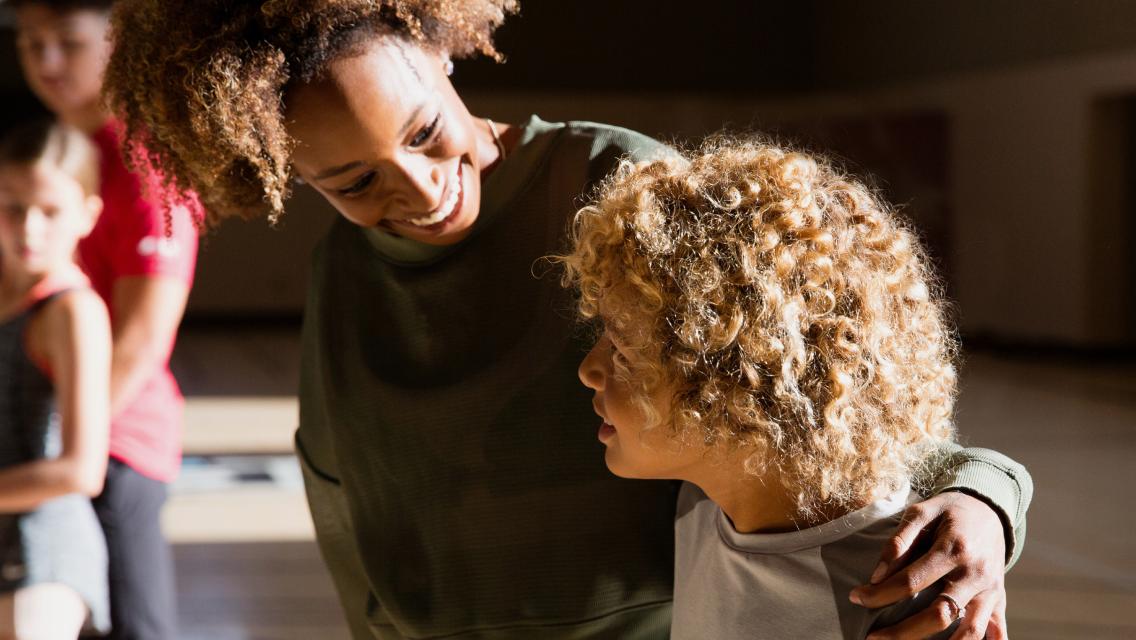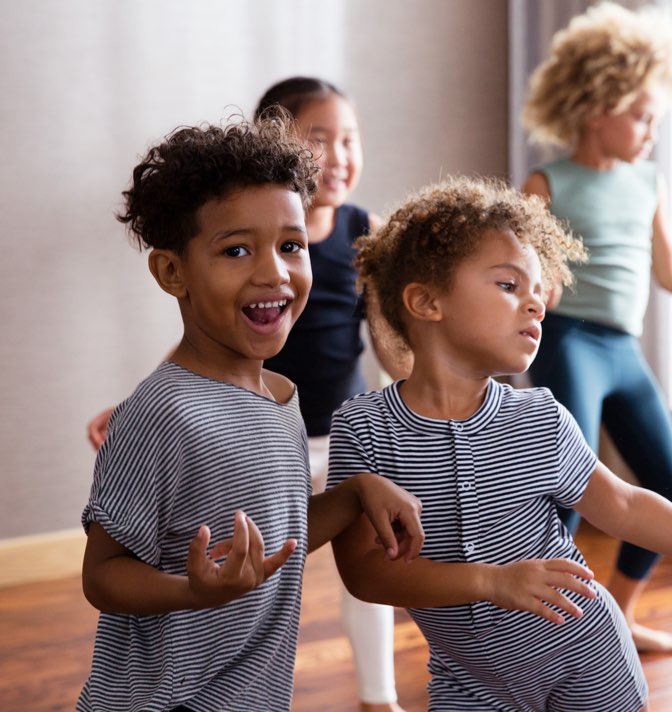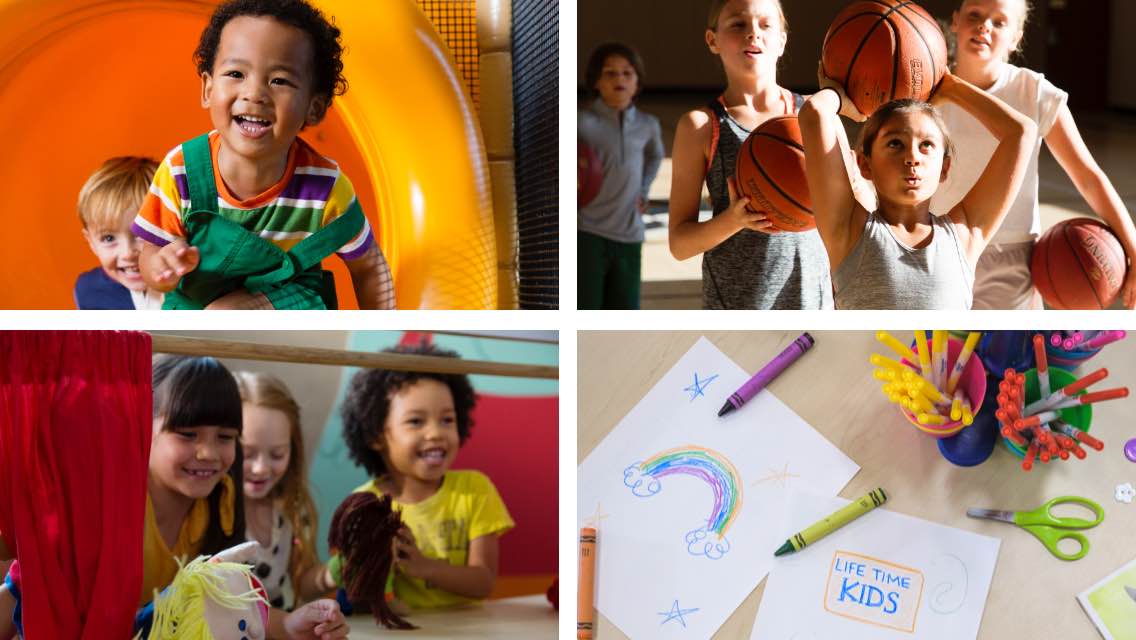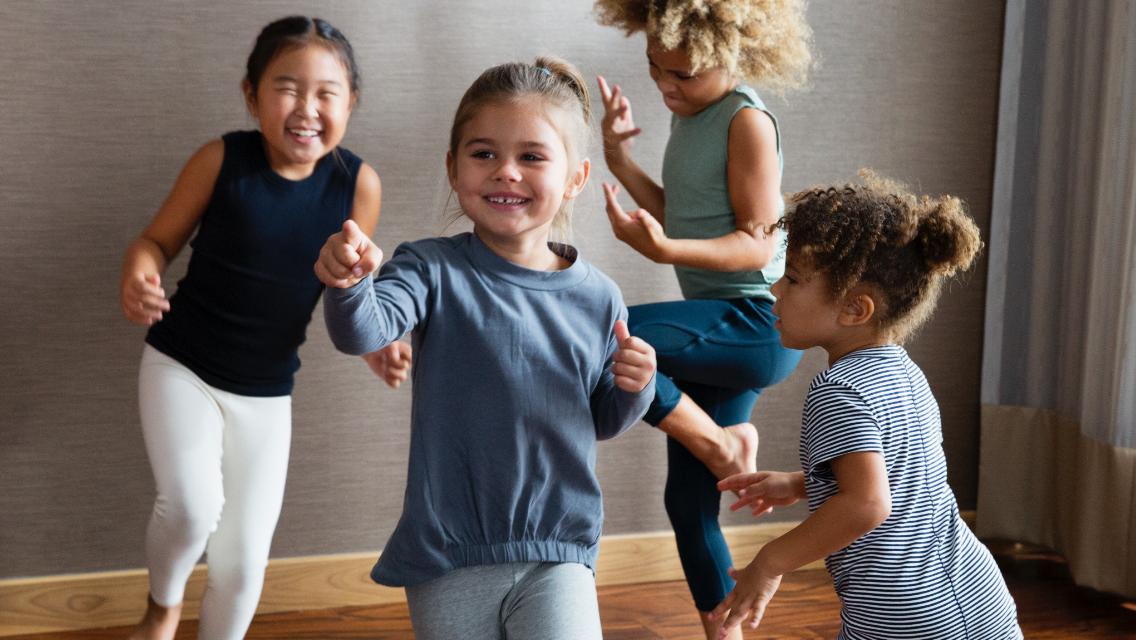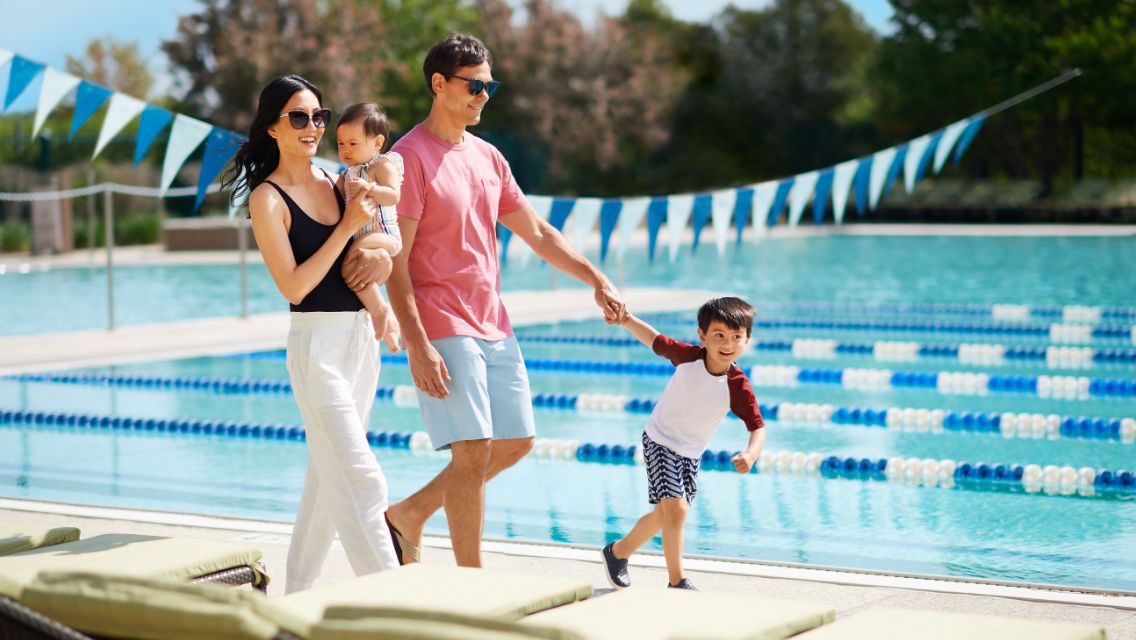It’s common for parents to worry about whether their child will feel supported and seen in an environment shared with other kids. Every kid is unique — with their own distinct personality, different needs, and hobbies and interests — so the care and activities for them in those spaces need to be diverse, varied, and welcoming. That’s the environment Life Time strives to create in its Kids Academy.
“When you bring your kids to Life Time, you can know there’s going to be something here for them to do and enjoy,” says Jen Rezac, director of kids and aquatics programming at Life Time. “Everyone comes to Life Time to live a healthier, happier life — kids and adults included. Life Time wouldn’t be able to be that place for millions of members if it didn’t have spaces and offerings [that are] welcoming to all.”
Life Time’s kids programming is intentionally designed to be inclusive and team members are specially trained to carry out the curriculum with professionalism and care for every child. “We want parents to be assured that regardless of which club they go to, their kids will be safe, engaged, and have a fun time,” says Rezac.
Here Rezac and a few of her colleagues — Glory Casillas, kids leader at Life Time in Centennial, Colo.; Kayla Robinson, kids supervisor at Life Time in Centennial, Colo.; and Shelly Forsberg, director of kids and aquatics business development for Life Time — talk about the efforts Life Time makes to welcome every child.
1. Kids can choose classes and activities to match their interests.
When a child comes to Life Time, the team is aware that not every kid wants to play a sport — nor does every kid want to do arts and crafts. Parents can trust that when they drop off their kids at the Kids Academy, Parents Night Out, or Kids Camp, there will be a variety of options for play to select from.
In the Kids Academy drop-in play and classes, kids can choose from movement-based classes like gymnastics, yoga, athletic conditioning, or gym games. There are also S.T.E.A.M. and creative discovery classes, which encourage arts exploration across different disciplines like music and painting. (Note: Not all classes are offered at every club.)
In the Learning Lab, kids can receive homework help, play brain games, or engage in arts and crafts activities.
“We’re very detailed when it comes to building our Kids Academy schedule, as we want to make sure there are classes for every type of kid with every type of energy or interests,” says Casillas. “Our schedule is also different every day to encourage kids to try new things.” (Learn more: “Fun at the Life Time Kids Academy: A Sneak Peek.”)
Stimulating and fun experiences are also the focal point of Parents Night Out and Kids Camps, where kids can participate in themed activities and learn how to build relationships with other children.
“We not only provide the spaces and programming, but it’s such a great place for kids to meet and play with new friends outside of people they know from school, sports teams, or church and build their own Life Time community,” adds Forsberg.
2. A relationship is created with the parents or guardians.
Having a relationship with each kids’ parents or guardians is just as important as the relationship with the kids, according to Robinson. “We approach every day and every interaction as a team — the kids team, the parent or guardian, and the kid — we’re all working together,” she says.
For example, Casillas recalls a relationship she has with the parents of a child at her club who uses a wheelchair. “We had a long discussion about accessibility when I first met them,” she explains. “I showed them the restrooms and how the kids programming and spaces are laid out. We also gave the family a guest pass to use for a few days prior to joining to ensure we were the right place for them.”
That child is now a long-time junior member, and the kids team works with his parents to ensure Life Time remains an open and respectful environment. “We want other kids to be comfortable with asking him questions so they can learn that not everyone looks the same,” adds Robinson. “And if they want to touch his wheelchair or help push him around, we make sure consent is maintained on both sides.”
In general, Robinson says the team aims to maintain an empathetic approach to every family relationship. “We take notes for each child to report back to the parent or guardian, documenting both the wonderful things a kid has done as well as any potential behaviors they can improve upon,” Robinson explains. “We also document best practices provided from the parents or guardians on how we can handle certain scenarios, as well as their kid’s unique needs.”
And if a child needs one-on-one care, they can bring in a personal care assistant, according to Forsberg. “While we are accommodating and do our best to make modifications, we do not provide one-on-one care,” she notes. “To bring in a personal care assistant, parents can partner with our kids leadership team at the club.”
3. The Life Time Kids team is thoughtfully assembled.
Just as every kid is unique, the instructors executing the programming are too. “Inclusivity for us starts right away at the casting stage,” says Casillas. “We’re very particular about who we hire and what questions we’re asking them to make sure they’re not only highly qualified, but also that we have a team that can meet the needs of all kids who might come through our doors.”
For example, Casillas says she asks those she’s interviewing questions like, “What are your favorite activities?” “Are you into arts?” “What kind of sports do you enjoy?” By learning about what they love to do, it helps her build a balanced team that can inspire more connections between an instructor and a child.
“We seek the right energies for our team to encourage healthy fun and meaningful connections for all kiddos,” she says.
4. Each kids instructor has specialty areas of focus.
Once a team member becomes confident interacting with the range of energies of the kids cared for in the Kids Academy (ages 3 months to 11 years), they then complete a series of trainings that allow them to pick specialty areas of focus, which segues them into teaching certain kids classes. These “endorsements,” as the trainings are called, include training on leading and successfully executing activities like yoga, dance, basketball, S.T.E.A.M, arts, athletic conditioning, rock wall, and more.
“With endorsements, kids instructors are learning more about what they’re passionate about, while also expanding their skills and knowledge to equip them to thoughtfully lead programming and handle varying scenarios,” explains Robinson. “All the different kids activities that we provide at Life Time aren’t just made up on the spot. The programming is all planned out, thoughtful, and intentional.”
Robinson has also noticed a trend: “When you have the right instructor who’s excited and passionate about what they’re teaching, it encourages the kids to come back and keep trying new things.”
There are also endorsements for supporting children with unique needs. “It’s important to us that every child feels supported, no matter their abilities,” adds Rezac. “We provide additional training for our team members to create an inclusive environment.”
These courses cover topics like supporting children with ADHD, autism, limited communication, and mental health needs. “Our goal is to ensure every child and family feel welcomed and valued, so they can enjoy the best possible experience at Life Time,” she says.
5. The kids curriculum is vetted and tested.
The Life Time Kids curriculum is built with both consistency and flexibility at its core. At the national level, curriculum experts — who are top performers at Life Time’s athletic country club destinations — create a strong framework that reflects the luxury brand.
From there, Life Time team members are trained not only on what the curriculum is, but also on how to adapt it to meet the unique needs of their club’s community.
“We’re confident in our curriculum because it’s created by people who truly know kids — experts from our clubs who bring years of hands-on experience,” explains Rezac. “For example, one of our curriculum experts draws from her background working with toddlers to design a healthy balance of activities for all little ones. Then she pilots it, observes how the kids respond, notes what modifications are needed, and sees how Life Time team members apply it — all before sharing the curriculum with the clubs.”
This process ensures the curriculum is not only research-based but also kid-tested and parent-approved. “It’s never a one-size fits-all program,” adds Rezac. “Every club has its own unique needs, and our facilitators make a point to connect with team members across the country to create a strong foundation for the curriculum, while still leaving room for local personality and creativity.”
6. Kids are met where they’re at.
The volume of kids in one setting can vary by club and activity, but whether it’s 40 kids at a climb night or 80 kids at a Parent’s Night Out, Robinson says they’re still able to see each kid and make them feel welcomed.
At Life Time Centennial, for instance, there’s a junior member who is non-verbal and loves to climb the rock wall. “Over time, we’ve learned that he understands directions when they’re stated very specifically and clearly,” Robinson says. “He comes in every time we host climb nights; I’ve trained my staff to make space for him by getting to his level to make eye contact and taking the time to explain things, which helps him flourish. It also helps his parents feel at ease.”
Robinson says they have the ability and are empowered to make changes that fit the needs of the kids, club location by club location. “At the end of the day, we want the kids to have a good time and be excited to come back because we love to see them,” she says.
